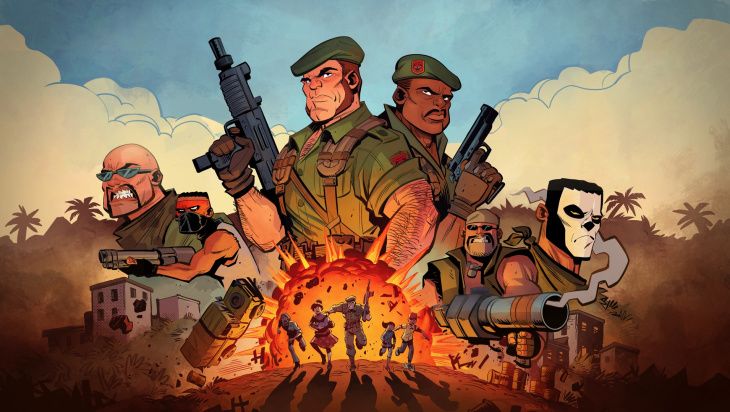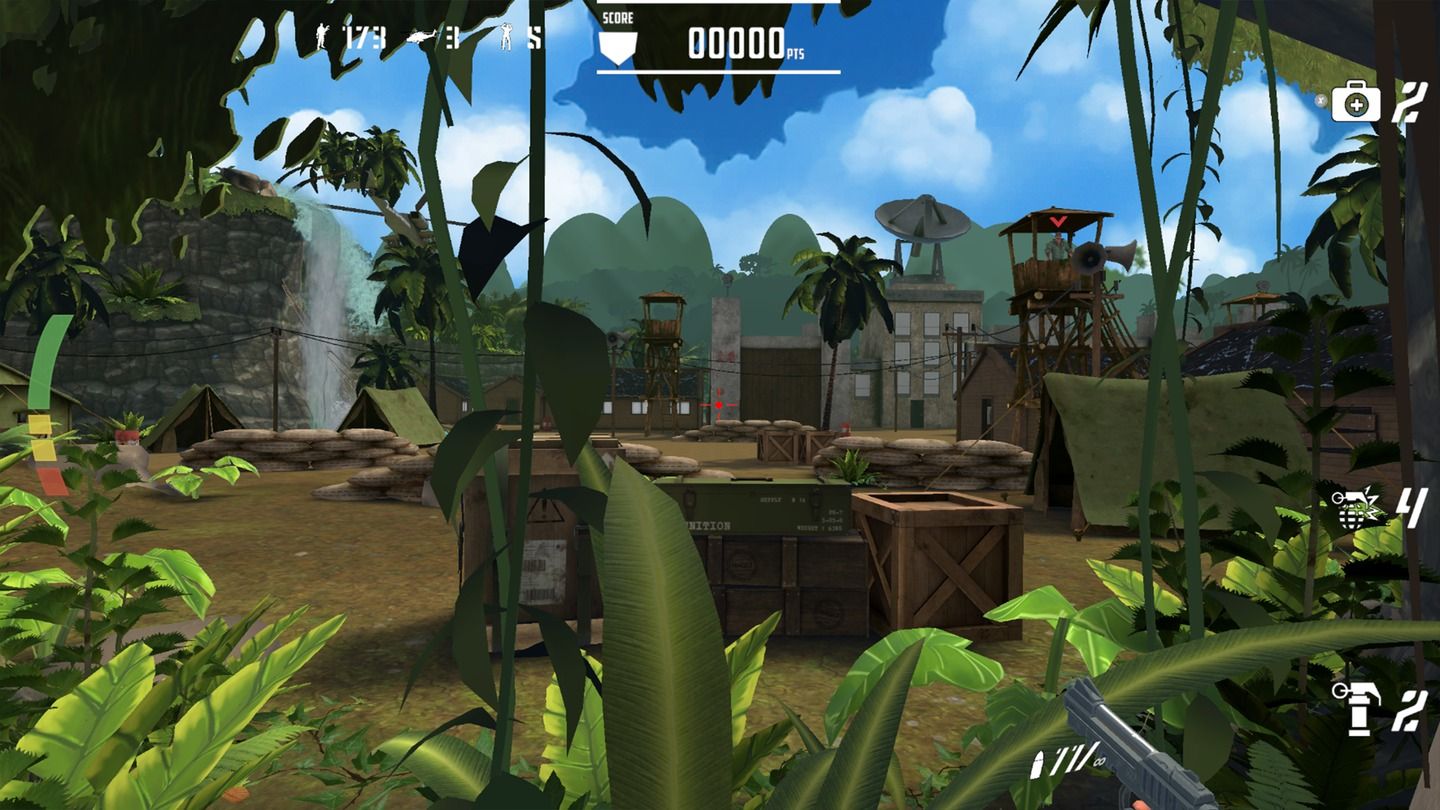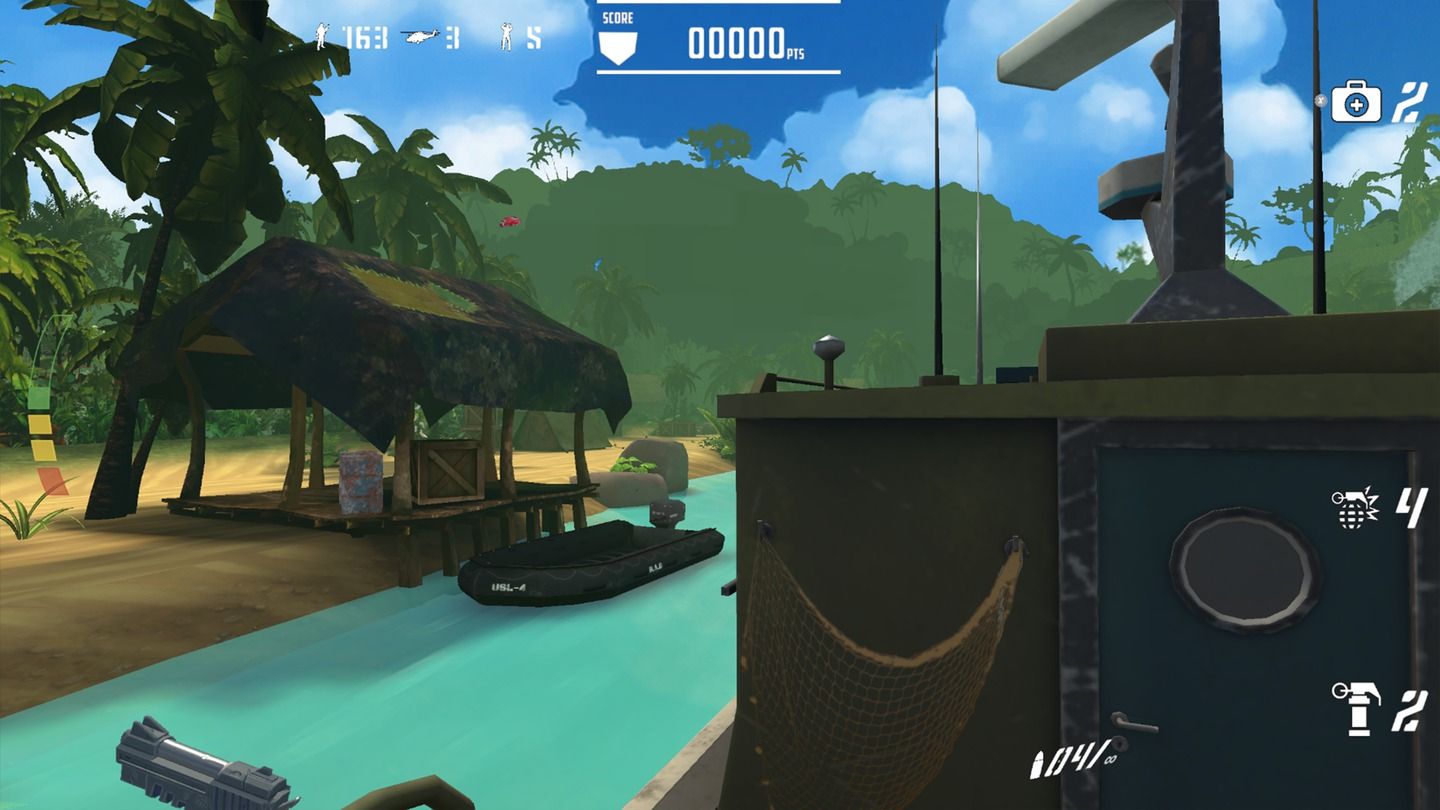Operation Wolf Returns: First Mission VR – A Gaming Memory Better Left In The Past


It’s Saturday morning, early 1988, and the atmosphere in my local arcade is electric.
My older brother along with at least a dozen other denim-clad pre-teens are crowded around the Operation Wolf machine that I’m playing. Except today, I’m not just playing; today, I am absolutely crushing it.
A supportive hand ruffles my messy blonde mullet as the pixelated bodies fall to the floor. I quickly wipe my palms across my tie-dyed tank top. Gripping the hard plastic Uzi attached to the arcade cabinet, I am transformed. No longer a dorky 8 year old wearing improbably short shorts, I am now Rambo incarnate and it’s time to bring the pain.
In 1987, this was what it was like to play Operation Wolf. Minding-bending, state-of-the-art, 8-bit brilliance. With the franchise returning for its VR debut 36 years later, it’s time to find out how much times have really changed.
Platforms: Quest, SteamVR, Pico, PSVR 2 (Review conducted on Quest 2)
Release Date: Out now
Developer: Microids
Price: $29.99
Having Flashbacks
Operation Wolf Returns: First Mission is a reboot of the classic 80s arcade shooter, brought into VR and available on Quest, Pico, PSVR 2 and PC VR headsets. Where the original was a side-scrolling light gun game, the VR incarnation is a first-person, on-rails shooter that effectively achieves the same general feeling as the arcade original.
As the levels roll by, a cavalcade of pixelated bad dudes saunter into view ready to be mown down by one of the four weapons at your disposal. The action will also see you face off against helicopters, trucks and tanks, each of which seem as sturdy as papier-mâché.
Hostages will meander through the battle with the urgency of a distracted toddler. Extra points are awarded for letting them amble to safety, but the stakes are so low that avoiding the bystanders quickly becomes more a suggestion than a requirement.
There are six levels which take 10-15 minutes each to complete, all of which culminate in an entirely forgettable boss fight. There are three difficulty settings to choose from, as well as leaderboards to compete on and an uninspired endless wave mode. Once you complete the 90-minute nostalgia-laden campaign, there’s little reason to load the game up again.

Going Retro
Operation Wolf Returns plays very closely to its source material. In fact, the similarities to the original are both its biggest strength and its greatest weakness. Amid the trend of bringing classic ‘boomer shooters’ into VR, there is an understanding that nostalgia alone is not enough to drive a compelling experience. Gameplay has evolved and gamers expect more – simply recreating a classic exactly as it was risks the game feeling dangerously dated.
Thus it is with Operation Wolf.
The settings and voice acting are all perfectly aligned with their 80s counterpart. If you experienced the original, there will doubtless be a thrill in finding yourself inside a childhood memory. However, this fond reminiscence swiftly fades as the lack of modern VR features becomes apparent. There is no manual reloading or holstering of weapons, nor are there any meaningful environmental interactions. You don’t even have the ability to open or close your off hand – it just floats there like an inanimate afterthought. The end result feels like playing something with 8-bit depth inside your cutting edge virtual reality headset.
Apocalypse No
The action in Operation Wolf Returns is rudimentary at best. The gunplay is basic and despite having four weapons at your disposal, one of them is clearly superior to others – not that it makes much difference which one you use anyway. Switching weapons merely involves pushing your left thumbstick in one of four directions. Grenades can be thrown by pressing the grip button and directing a limp, arcing projectile indicator to exactly where you want it to land – barely any physical movement required.
As the levels drift by, the same assortment of enemies continue to pop out in unsurprising locations and with the reaction time of snails. They go down in a near-instant, dropping the same few perks each time they die, including uninspired gun icons representing ammo that you can shoot to pick up. It all begins to feel repetitive – and boring – before the first stage is even complete.
The minimal level of challenge comes from ducking around enemy bullets in an attempt to insert an element of physicality. While this is a modern staple of VR shooters, it feels severely undercooked in Operation Wolf. Where games like Pistol Whip ask the player to weave an almost dance-like route between bullets, Operation Wolf seems more intent on pulling your attention in one direction only to then hit you in the back from another.
This is less annoying than it could be thanks to the unlimited continues, which ultimately then make it absolutely impossible to die. Not only can you continue at will, but in doing so you suffer no discernible consequence. Progress, ammo, items; nothing resets upon dying. You simply choose to continue and jump back into the exact moment you left, as if nothing happened. The entire concept of having ‘lives’ is rendered moot and it utterly destroys any potential for tension throughout the campaign.

Sound and Vision
Graphically, Operation Wolf attempts to present a modernized version of the gritty pixel art of the classic version. Unfortunately, the art direction misses the mark and lacks polish. Though the visuals avoid the trope of leaning into pixel art to sell a retro vibe, they instead tread an awkward middle ground that looks unrefined and indistinct. The backgrounds may be vibrant and colorful, but consist of blocky and indistinct models with jagged edges everywhere you look. The enemy characters are 3D upgrades of the pixelated 80s designs, but with little stylization nor sense of identity.
When it comes to sound design, a conscious decision has been made to revel in the sound quality of 80s games. Sadly, the attempt at transposing sonic components of a bygone era feels less kitsch or charming and instead sounds tinny and lacking gravitas. The one exception is the main voice over, which is campy, rich and familiar, briefly selling that feeling of stepping inside an after school special.
Operation Wolf Returns – Comfort
Operation Wolf Returns: First Mission VR is an on-rails affair, so players will need to be able to tolerate some level of artificial movement in VR. The movement is slow and predominantly in a single direction, but there are absolutely no comfort options available, so players who are susceptible to smooth locomotion may wish to be careful.
Operation Wolf Returns: First Mission VR Review – Final Verdict
Operation Wolf Returns: First Mission VR succeeds in administering a small dose of arcade nostalgia. However, it not only fails to reach the benchmark of modern VR shooters, but falls short of offering a compelling experience from the very first stage. The short, shallow campaign replicates the simple gameplay loop of an 80s arcade game, but forgets to add enough – or anything – to make it relevant to a modern VR audience.

UploadVR focuses on a label system for reviews, rather than a numeric score. Our reviews fall into one of four categories: Essential, Recommended, Avoid and reviews that we leave unlabeled. You can read more about our review guidelines here.




